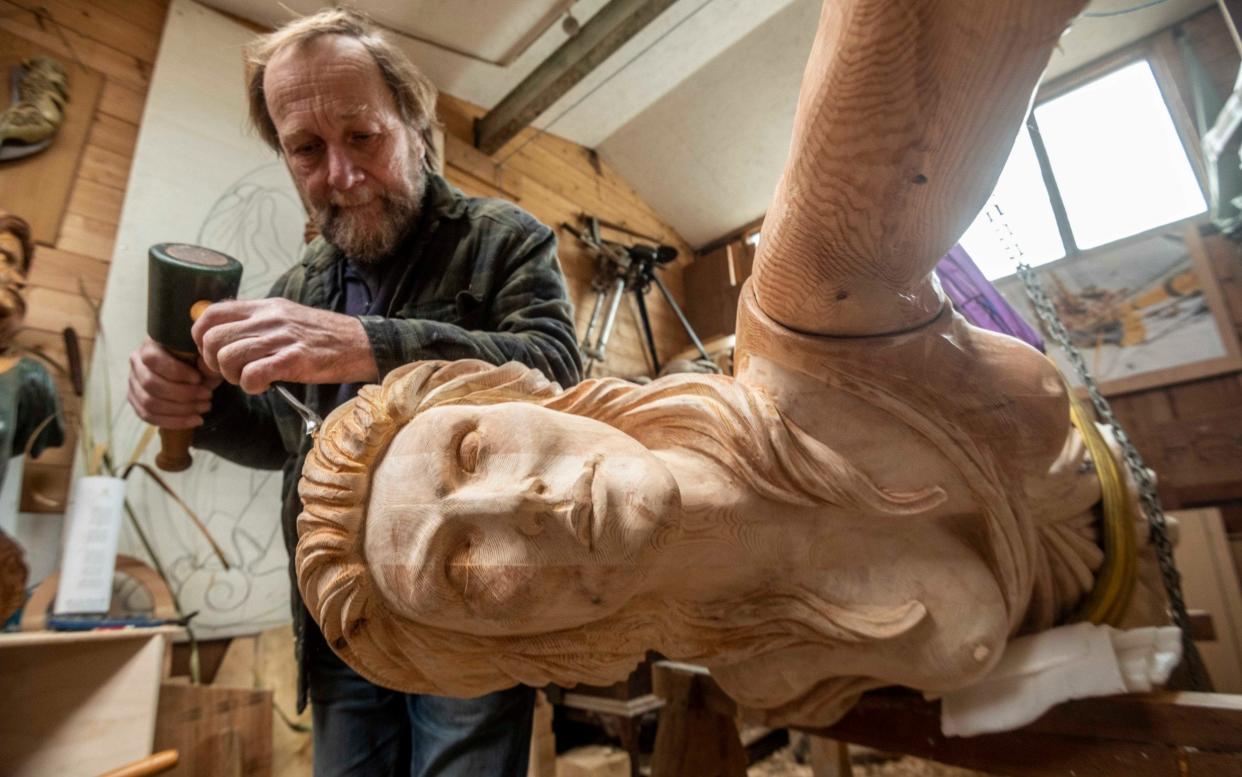Cutty Sark gets a new figurehead of 'Nannie the Witch'

Working to a drawing by the original designer of the Cutty Sark, woodcarver Andy Peters is close to completing a new figurehead for the majestic tea clipper.
Based on Hercules Linton’s 1860s sketch (see picture below), the figurehead will replace the current sculpture of a scantily-clad woman, which is showing signs of suffering from rot.
The present masthead was carved by Arthur Levison during the 1954-7 restoration of the Cutty Sark and Mr Peters has taken the opportunity presented by the decision to replace her to go back to Linton’s original conception.
Dressed only in a short nightdress - called a ‘cutty sark’ in old Scots - the figurehead represents Nannie, a witch who chases a drunken farmer in Robert Burns' poem Tam O'Shanter.



Mr Peters, one of Britain's last professional ship's carvers, began work on the figurehead at his studio in Oxfordshire last February, laminating sections of timber to form the carving block before starting work on shaping the wood.
“It is important to create ornamentation that compliments the lines and beauty of a vessel rather than overshadowing it,” says Mr Peters. “All my work is carved by hand using traditional tools. It is the only way to create period pieces with a true feel of authenticity.”
Once the carving is completed the figure of Nannie will be painted white with gold leaf detailing and, in the coming months, fitted to the Cutty Sark, the world’s only surviving tea clipper, at her permanent berth in Greenwich, south east London.
Mr Peters, whose work includes a replica of Gotheborg, a Swedish East India Company ship from 1738, set up his firm Maritima Woodcarving in 1990, with the aim of keeping alive the trade of the ‘ship’s carver’.
“At one time every major shipyard would have had a ships carver to supply the mass of ornamentation required to adorn Men of War, East India ships and lesser merchantmen,” he said. “Over the years I have constantly researched the subject of ship ornamentation, allowing Maritima to create carvings in historical styles, and subject matter faithful to specific periods for replica ships.”

 Yahoo News
Yahoo News 